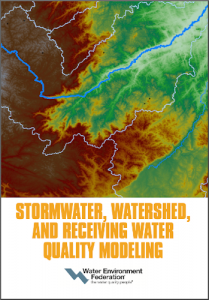Selecting the best-suited model to support stormwater projects can be complicated. Today’s water quality managers must not only be able to predict peak flow rates, runoff volumes, and receiving water quality, they must also navigate stringent regulatory requirements and varying levels of resources.
 The Water Environment Federation’s (WEF; Alexandria, Va.) newest publication, Stormwater, Watershed, and Receiving Water Quality Modeling, provides straightforward guidance on a broad spectrum of modeling tools and their capabilities. Its contents, authored and peer-reviewed by leading water sector professionals, offer perspectives on stormwater quality modeling, and outline criteria for selecting the appropriate model based on specific projects or tasks.
The Water Environment Federation’s (WEF; Alexandria, Va.) newest publication, Stormwater, Watershed, and Receiving Water Quality Modeling, provides straightforward guidance on a broad spectrum of modeling tools and their capabilities. Its contents, authored and peer-reviewed by leading water sector professionals, offer perspectives on stormwater quality modeling, and outline criteria for selecting the appropriate model based on specific projects or tasks.
Complete with detailed examples of stormwater, watershed, and receiving water quality models, this up-to-date resource is an essential tool for those engaged in the planning and design of urban stormwater management plans, watershed implementation plans, or other water quality management plans.
Key focuses of this publication include
- state-of-the-art guidance on stormwater modeling;
- perspectives on the past, present, and future of stormwater modeling;
- regulatory, technological, and research considerations of stormwater modeling;
- uses and applications of watershed models and instream/receiving water models;
- selecting a model based on capabilities and user needs;
- modeling of erosion and sediment transport;
- the socio-economic impact of stormwater modeling; and
- side-by-side comparisons of land-based and receiving water quality simulation models.
Purchase a print or e-book version of the publication online. For more information, contact WEF staff member Karah DeMarco at kdemarco@wef.org or 703-684-7211.




